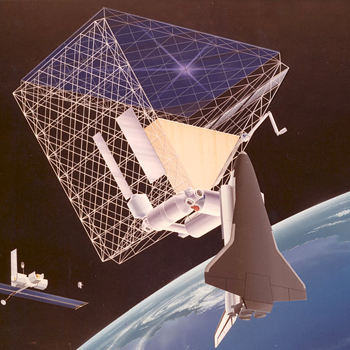How is angular momentum quantized?
1 Answer
where
Explanation:
L^2 and Lz are here representing the operators representing square of the Angular momentum and Z- component of L.
These operators are defined after separation of radial and angular part of the Schrodinger equation and its eigenfunctions are the spherical harmonics.
For a quantum system the Angular momentum space is quantized means the ang. momentum can not take continuous values .
If l is the angular momentum of a state of particle, in that case the L^2 and Lz operators simultaneously commute with
Hamiltonian (the total energy operator) of the system which have energy as their eigenvalues .
**#(L^2 )#Y(l,m)# = #(l(l+1) (h/(2pi)^2**
and
Lz . Y(l,m) = m,(h/2pi)
and only eigen values of L^2 and Lz are well defined or can be measured simultaneously.
They commute with each other and H-the Hamiltonian.
Suppose a particle is in p-state ; so its l=1
then the possible eigen value of L^2 will be
(here we are writing h for h/2.Pi)
And the z-component can have only three possible Values
# m= -1 , 0, +1
So ,
If plotted on a Vector model The Lz will appear as intercept of
projection of L on z-Axis with length of L vector as
For l=0 i.e. a S-state L=0(0+1)hbar=0
For higher angular momentum states the Lz values will be more spread
for l=2 . Lz will have five allowed states..and so on..

